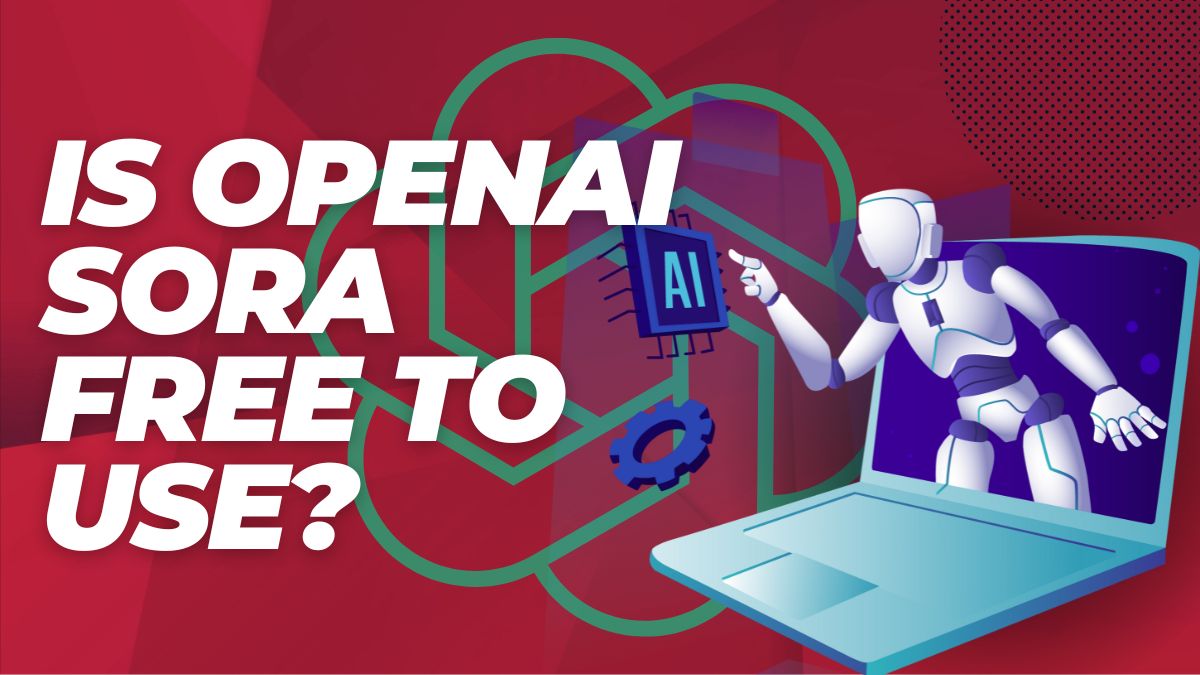OpenAI recently unveiled its newest AI creation, Sora – a revolutionary text-to-video generator capable of creating realistic and imaginative video scenes of up to 60 seconds from simple text prompts.
Sora represents a massive leap forward in multimodal AI, seamlessly bridging the gap between language and video. However, as excitement builds around this powerful new technology, many are wondering – will Sora be free to use like ChatGPT?
Sora’s Capabilities
Let’s first understand what Sora can actually do. Described by OpenAI as a “foundation for models that can understand and simulate the real world,” Sora demonstrates some remarkable skills:
- It can generate intricate scenes with multiple characters, specific motions, and accurate subject/background details.
- The model comprehends the textual prompts and how those elements would exist physically.
- Sora has masterful language comprehension to translate prompts into compelling, emotionally-vibrant characters.
- It can render multiple distinct shots within a single video, maintaining visual coherence.
In addition, Sora can reanimate still images, extend existing videos, and even fill missing frames.
Current Accessibility
However, Sora is not publicly available yet. OpenAI has provided limited access to two groups for now:
Red teamers: Experts in risky domains like misinformation, hate speech, and bias who are rigorously testing Sora.
Select creators: A chosen cohort of visual artists, filmmakers and designers giving feedback to improve the model.
OpenAI states that it aims to collect insights from wider audiences to responsibly shape Sora’s development.
Eventual Availability
While Sora’s exact release timeframe remains unclear, OpenAI confirms its ambitions to incorporate the model into its commercial products after adequate safety measures.
A comment on its official community forum also hints at a future waiting list for public access. However, concrete details are still scarce.
Hence, while Sora likely won’t remain restricted forever, its mainstream launch could still be months away. Unfettered public access too soon could be problematic given the potential for misuse.
Pricing Model
OpenAI is yet to divulge Sora’s pricing model. However, we can derive clues from their existing offerings:
- ChatGPT: Free tier with limitations + paid tier with added capabilities
- DALL-E 2: Credit-based paid access only
- DALL-E 3: Currently free with waitlist + later paid access expected
Drawing parallels, Sora will likely employ a freemium/premium mix with capped free usage and paid plans with extra features. This balances accessibility with commercial viability.
However, generative video does amplify content moderation and misuse challenges. OpenAI could hence be more conservative initially, granting access only to paying enterprise customers for better oversight.
Over time though, scaled safety frameworks combined with a free tier may become feasible as with ChatGPT.
Safety Guardrails
OpenAI seems to be taking a measured approach with Sora’s development and rollout, given the potential risks like deepfakes and misinformation.
They are proactively red teaming the model and building specialized tools to detect Sora-generated imagery. Additionally, existing content moderation techniques from DALL-E’s deployment like robust classifiers are being leveraged.
Extensive collaboration with experts and policymakers is also underway to address concerns around negative use cases.
Limitations of Current Research Version
Per OpenAI, the existing Sora model does have some key weaknesses:
- Inaccurate physics simulations for complex scenes
- Confusion over cause-and-effect relationships
- Mixing up left-right and other spatial perspectives
- Struggling with precise event sequencing/camera motions over time
Further scaling of video models combined with rigorous red teaming and safety research are required before Sora can be responsibly released for public access.
How It Can be Useful?
Sora represents an exciting milestone in AI’s continuing quest to model the dynamics of the real world. As it matures, Sora could enable breakthroughs across domains like education, creative arts, virtual worlds, and scientific simulation.
However, the societal impacts of such powerful generative technology also warrant careful consideration to develop appropriate safeguards against potential harms.
Balancing these priorities will be crucial as pioneers like OpenAI drive the responsible advancement of systems that can emulate and understand reality.
Conclusion
OpenAI’s revolutionary text-to-video generator Sora is still in early research stages and not freely accessible yet. Targeted red teaming and creator feedback are currently underway.
Eventual public availability is planned but may be gated initially and employ a freemium model much like ChatGPT. Extensive safety measures are also being implemented given the risks of generative video content.
As Sora evolves from cutting-edge research into real-world deployment, OpenAI faces crucial ethical challenges around guarding against misuse while unlocking its immense creative potential. Their solutions could set vital precedents for the future of AI.
So, while a free public Sora remains on the distant horizon today, it could profoundly impact how we create, consume and regulate video content tomorrow. The path ahead will be filled with difficult open questions, necessitating collective wisdom and responsibility across technology, policymaking, civil society and creative domains.
